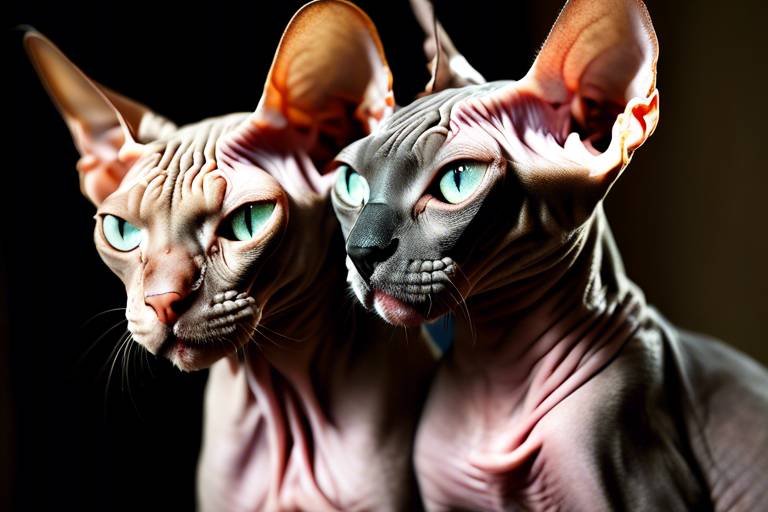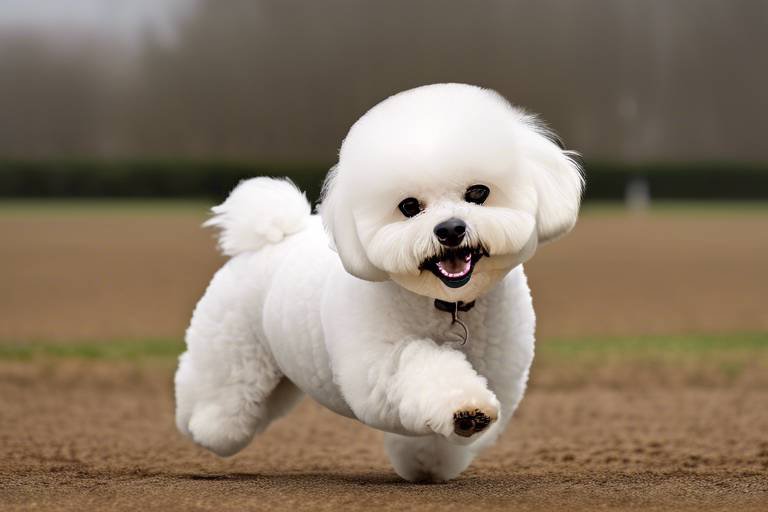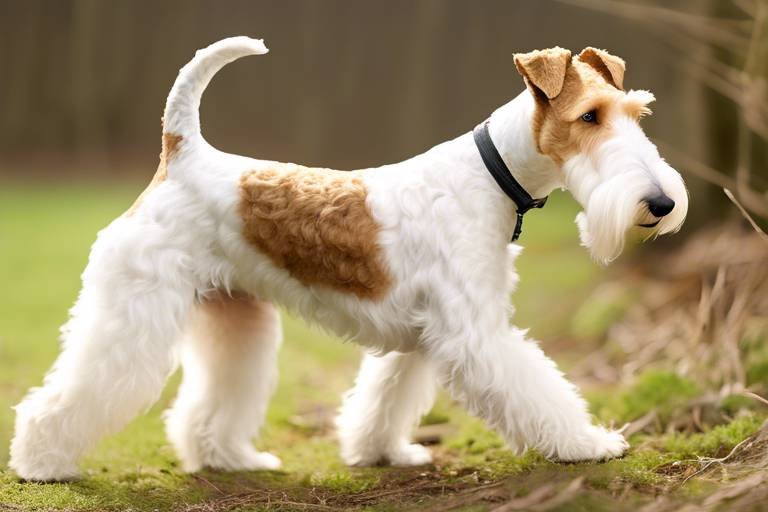Understanding the Gentle Nature of Clumber Spaniels
When you think of a dog that radiates warmth and affection, Clumber Spaniels often come to mind. These lovable companions are not just pets; they become a part of the family. With their gentle demeanor and friendly disposition, Clumber Spaniels are known for their ability to bond with people of all ages. Whether you're a busy professional, a retiree, or a family with kids, these dogs adapt remarkably well to various lifestyles, making them incredibly versatile companions.
Originating in the 18th century, Clumber Spaniels were bred for hunting, specifically to retrieve game from dense underbrush. Their history is steeped in royalty, as they were favored by the Duke of Newcastle and later gained popularity among the British aristocracy. This noble lineage contributes to their calm and composed nature, which is often contrasted with the more frenetic energy seen in other breeds. Clumber Spaniels are characterized by their stocky build, large heads, and expressive eyes that seem to speak volumes about their affectionate personality.
One of the most striking features of Clumber Spaniels is their intelligence. They possess a keen ability to learn, making training an enjoyable experience for both the dog and the owner. However, with this intelligence comes a need for mental stimulation. Without adequate engagement, these dogs can become bored and may develop undesirable behaviors. Thus, understanding their needs is crucial for fostering a happy and healthy relationship.
In terms of temperament, Clumber Spaniels are often described as gentle giants. They are incredibly sociable, getting along well with children, other pets, and even strangers. Their friendly nature makes them excellent family dogs, as they thrive on companionship and affection. However, it's important to recognize that their socialization needs are paramount. Just like a flower needs water and sunlight to bloom, Clumber Spaniels need exposure to various environments, people, and experiences to develop into well-rounded adults.
In this article, we will explore the unique characteristics of Clumber Spaniels, from their royal history to their temperament and care requirements. We'll also delve into their health considerations, nutrition, exercise, and how to find the right Clumber Spaniel for your lifestyle. So, if you're contemplating welcoming one of these gentle souls into your home, or if you're simply curious about this incredible breed, you're in the right place!
- What is the average lifespan of a Clumber Spaniel? Clumber Spaniels typically live between 10 to 12 years.
- Do Clumber Spaniels shed a lot? They do shed, but regular grooming can help manage their coat and reduce shedding.
- Are Clumber Spaniels good with children? Yes, they are known for their gentle nature and are usually very good with kids.
- How much exercise do Clumber Spaniels need? They require daily exercise, ideally around an hour of activity, to keep them healthy and happy.
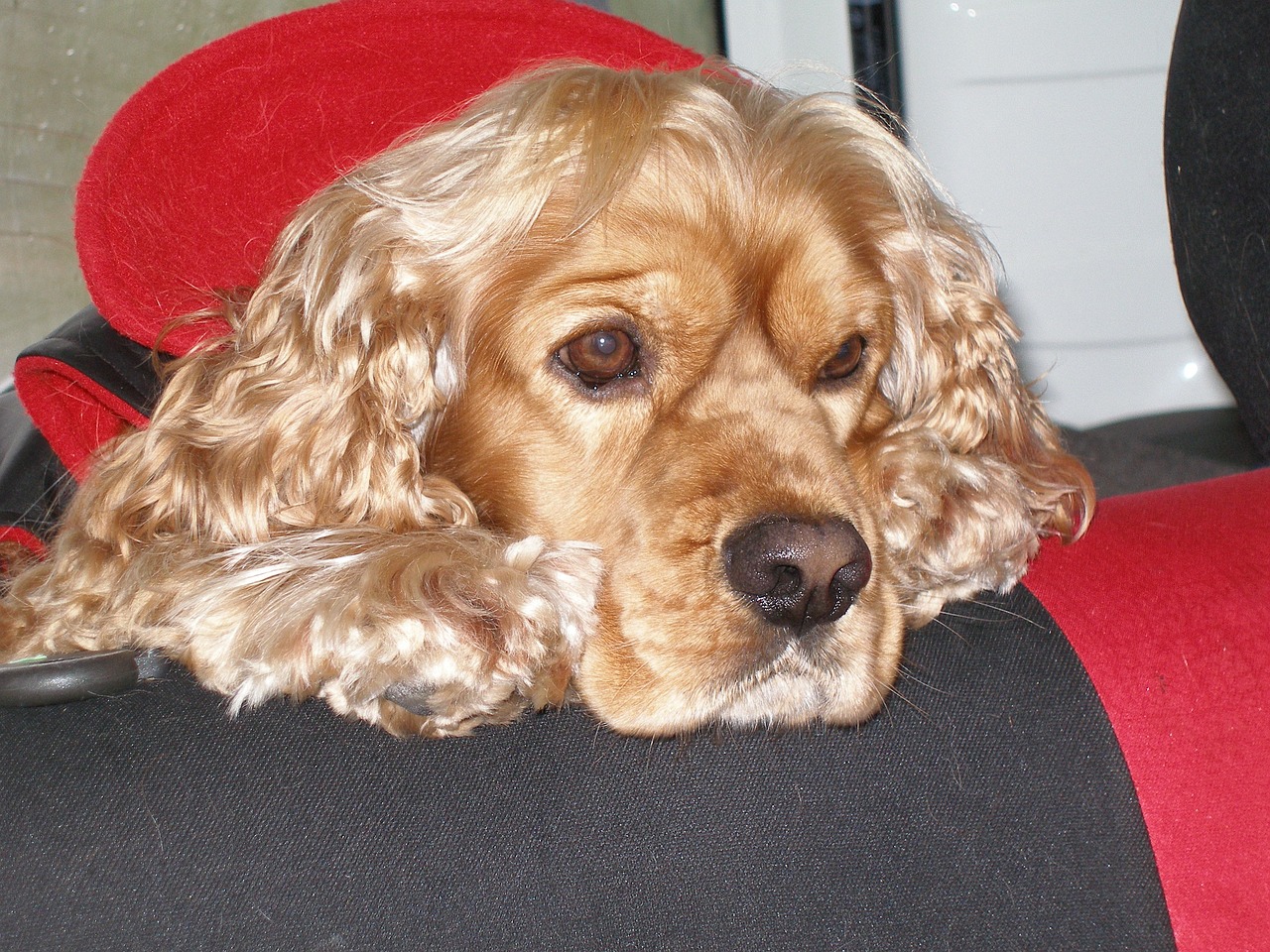
The History of Clumber Spaniels
The Clumber Spaniel boasts a fascinating history that intertwines with the royal elite of England. Originating in the early 19th century, these charming dogs were bred at Clumber Park, the estate of the Duke of Newcastle. Their lineage can be traced back to the Bloodhound and Basset Hound, which contributed to their distinctive appearance and gentle nature. The Clumber Spaniel was primarily developed as a hunting companion, designed to track and retrieve game in the dense underbrush, making them indispensable to hunters.
As the breed gained popularity among the nobility, Clumber Spaniels became a symbol of status and prestige. The Duke of Newcastle and his peers cherished these dogs not only for their hunting prowess but also for their loyal and affectionate temperament. This dual purpose of hunting and companionship has made the Clumber Spaniel a beloved breed across households. Their gentle demeanor and playful spirit have allowed them to transition from the hunting grounds to the living rooms of families, solidifying their place as cherished family pets.
During the Victorian era, the Clumber Spaniel was showcased in dog shows, further cementing their reputation. Breeders began to standardize the breed, focusing on maintaining their unique characteristics. The breed's popularity surged, and they became a staple in the homes of the upper class. However, as time passed and hunting practices evolved, the number of Clumber Spaniels began to dwindle, leading to concerns about their future.
Today, Clumber Spaniels are recognized for their unique combination of intelligence, gentleness, and playfulness. They continue to serve as excellent companions for families and individuals alike. Despite facing challenges in terms of breed preservation, dedicated breeders and enthusiasts work tirelessly to ensure that this noble breed remains a part of our lives. Their history is a testament to their adaptability and the enduring bond between humans and dogs.
- What is the origin of Clumber Spaniels?
The Clumber Spaniel originated in the early 19th century at Clumber Park, England, and was bred by the Duke of Newcastle. - Are Clumber Spaniels good family pets?
Yes! They are known for their gentle and friendly nature, making them excellent companions for families. - What were Clumber Spaniels originally bred for?
They were primarily bred for hunting, specifically to track and retrieve game. - How can I ensure my Clumber Spaniel is well-socialized?
Implementing early socialization techniques and maintaining ongoing interactions with various environments and people are key.
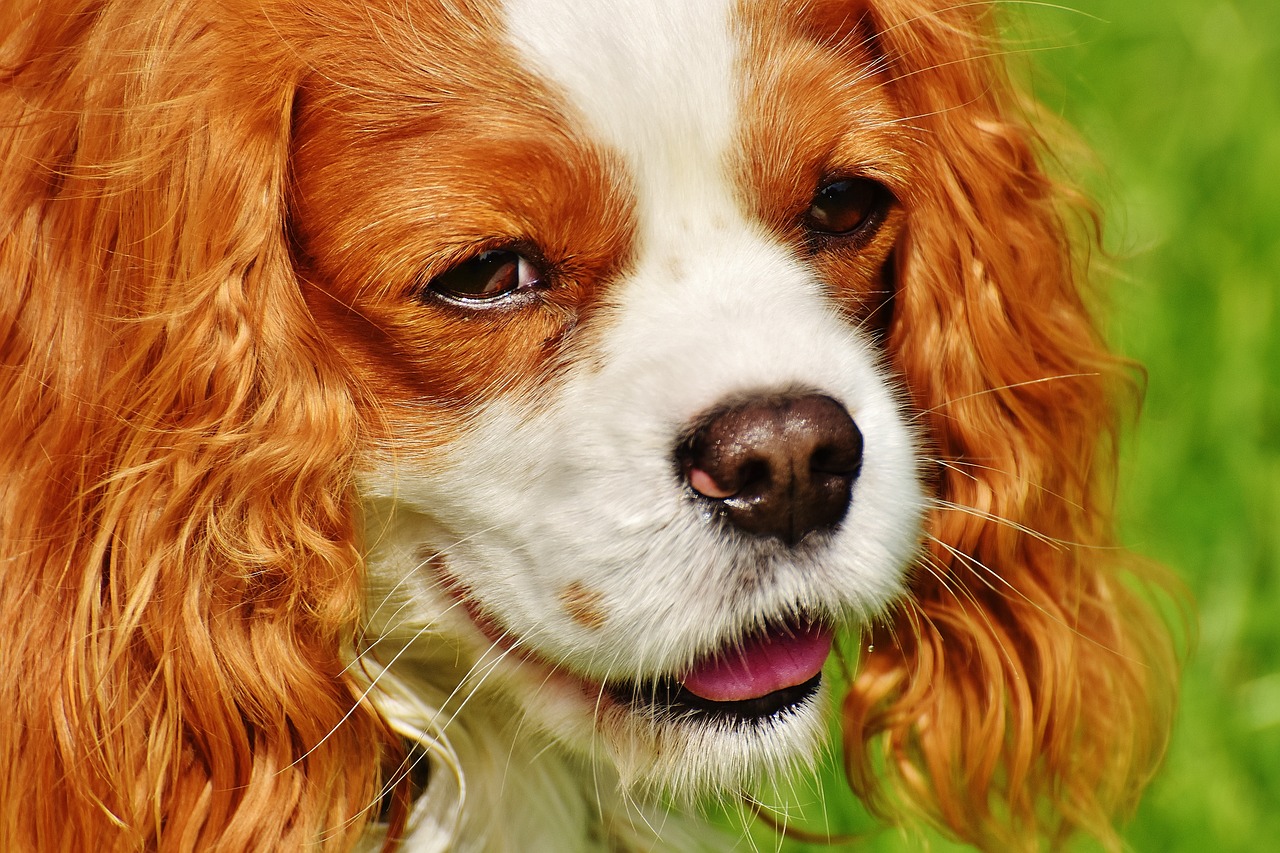
Temperament and Personality Traits
Clumber Spaniels are often described as the gentle giants of the dog world, embodying a friendly and affectionate nature that makes them ideal companions for families and individuals. Their calm demeanor is a breath of fresh air, providing a soothing presence in any home. These dogs are not just pets; they are loyal family members who thrive on human interaction and love to be part of the action. Imagine coming home after a long day, and there they are, tail wagging, ready to greet you with unconditional love. Isn’t that just the kind of welcome we all crave?
One of the standout traits of Clumber Spaniels is their intelligence. They are quick learners, which makes training them a rewarding experience. However, this intelligence also means they can become bored if not adequately stimulated. Therefore, it’s crucial to engage them in activities that challenge their minds, such as puzzle toys or obedience training. Think of it like giving them a job; they take pride in their work and love to impress their owners with their skills.
Moreover, Clumber Spaniels are known for their sociable nature. They generally get along well with children, other dogs, and even pets like cats. Their gentle disposition allows them to be patient and tolerant, making them a perfect match for families with kids. Just picture a Clumber Spaniel lying peacefully as toddlers play around them, completely at ease. This breed’s ability to adapt to various environments and social situations is a testament to their friendly personality.
To fully unlock the potential of a Clumber Spaniel's personality, socialization is key. Early exposure to different people, environments, and other animals helps them grow into well-rounded dogs. Without proper socialization, they may become shy or overly protective, which is not ideal. Think of socialization as the foundation of their character; the more diverse their experiences, the more confident they become. Simple outings to parks, pet-friendly stores, or even playdates with other dogs can work wonders for their development.
Implementing early socialization techniques can significantly impact a Clumber Spaniel's behavior. Start by introducing your puppy to a variety of experiences. This could include:
- Meeting different people, including children and seniors
- Exploring various environments such as busy streets, quiet parks, and bustling markets
- Interacting with other animals, from dogs to smaller pets
Each new experience helps build their confidence and reduces the likelihood of fear-based behaviors later in life. Remember, the goal is to make these experiences positive and rewarding.
Maintaining ongoing socialization is crucial for Clumber Spaniels as they grow. Regular exposure to new environments and experiences keeps their sociable nature thriving. Activities like:
- Joining dog training classes
- Participating in dog-friendly community events
- Going on family outings where dogs are welcome
These activities not only reinforce their friendly disposition but also provide mental stimulation, which is essential for their overall well-being. A well-socialized Clumber Spaniel is a joy to be around, bringing laughter and warmth into any situation.
Training Clumber Spaniels requires a mix of patience and consistency. They respond best to positive reinforcement methods, where rewards and praise are given for good behavior. This approach not only encourages them to learn but also strengthens the bond between you and your dog. It’s essential to remember that these dogs love to please their owners, so incorporating fun and engaging training sessions can turn learning into a delightful game.
Q: Are Clumber Spaniels good with children?
A: Yes, Clumber Spaniels are known for their gentle and patient nature, making them excellent companions for children.
Q: How much exercise do Clumber Spaniels need?
A: Clumber Spaniels require regular exercise, including daily walks and playtime, to stay healthy and happy.
Q: Do Clumber Spaniels shed a lot?
A: Clumber Spaniels have a moderate shedding rate. Regular grooming helps manage their coat and minimize shedding.
Socialization Needs
Socialization is not just a buzzword in the dog training world; it's a crucial element in raising a well-adjusted Clumber Spaniel. These dogs, with their friendly and gentle nature, thrive when they are exposed to a variety of environments, people, and other animals. Imagine a Clumber Spaniel as a sponge, ready to soak up experiences that will shape their behavior and personality. The more diverse their experiences, the more confident and adaptable they become. This is particularly important for Clumber Spaniels, as their natural inclination is to be sociable and friendly.
To ensure your Clumber Spaniel grows into a well-rounded adult, it's essential to start socialization early. Puppies are like little explorers, and the world is their playground. Introducing them to different sights, sounds, and smells during their formative months can significantly influence their comfort level in new situations later in life. This can include visits to the park, encounters with other pets, and even trips to the local pet store. The key is to make these experiences positive and rewarding.
Here are some effective techniques to enhance your Clumber Spaniel’s socialization:
- Positive Reinforcement: Always reward your dog with treats or praise when they encounter something new without fear. This will help them associate new experiences with positive outcomes.
- Gradual Exposure: Start with less intimidating situations and slowly introduce your Clumber Spaniel to more challenging environments as they gain confidence.
- Playdates: Arrange playdates with other friendly dogs. This not only helps them learn proper dog etiquette but also reinforces their sociable nature.
- Group Classes: Enroll them in puppy training or socialization classes. These settings provide structured interactions with other dogs and people.
But remember, socialization doesn’t stop once your Clumber Spaniel reaches adulthood. Ongoing socialization is just as vital. Regularly exposing them to different environments, people, and situations helps maintain their sociable demeanor. It's like keeping the gears of a well-oiled machine running smoothly. A well-socialized Clumber Spaniel is less likely to develop behavioral issues such as fearfulness or aggression, making them a joy to be around.
In summary, socialization is a lifelong commitment that requires attention and effort. By prioritizing this aspect of your Clumber Spaniel's upbringing, you are not only enhancing their quality of life but also ensuring that they are a beloved member of your family. So, get out there, explore, and let your Clumber Spaniel experience the wonderful world around them!
Q: How early should I start socializing my Clumber Spaniel?
A: Ideally, you should start socializing your Clumber Spaniel as early as possible, around 7 to 8 weeks old. Early experiences can significantly shape their behavior as adults.
Q: What if my Clumber Spaniel is shy or fearful?
A: If your Clumber Spaniel shows signs of shyness or fear, take it slow. Gradual exposure to new experiences, paired with positive reinforcement, can help build their confidence over time.
Q: How often should I socialize my Clumber Spaniel?
A: Regular socialization should be a part of your Clumber Spaniel's routine throughout their life. Aim for new experiences at least a few times a week to keep them well-adjusted.
Early Socialization Techniques
When it comes to shaping the personality of your Clumber Spaniel, early socialization is key. Think of it as laying the foundation for a sturdy house; without a solid base, everything else can crumble. The first few months of your puppy's life are crucial for exposing them to different environments, people, and other animals. This exposure helps them grow into well-adjusted and confident adults.
One effective technique is to introduce your Clumber Spaniel to various sounds and sights. Play recordings of different noises, like traffic, thunder, or even the vacuum cleaner, while providing treats and praise. This helps them associate these sounds with positive experiences rather than fear. Additionally, taking your puppy on car rides to parks or pet-friendly stores can expose them to new smells and sights, making them more adaptable.
Another important aspect of early socialization is meeting new people and pets. You can organize playdates with other dogs or invite friends over to interact with your puppy. This not only helps your Clumber Spaniel learn how to behave around other animals but also teaches them to be comfortable with a variety of human interactions. Remember, the goal is to create positive associations, so always supervise these interactions to ensure they are safe and enjoyable.
Incorporating training into socialization is also beneficial. Teaching your Clumber Spaniel basic commands like "sit," "stay," and "come" in different environments can reinforce their confidence. Consider enrolling in puppy training classes where they can learn alongside other dogs. This not only provides structured learning but also allows for social interactions in a controlled setting.
To summarize, here are some early socialization techniques that can help your Clumber Spaniel thrive:
- Expose them to various sounds and sights.
- Arrange playdates with other dogs.
- Introduce them to different people in a safe environment.
- Incorporate training into socialization activities.
- Enroll in puppy training classes for structured learning.
By investing time and effort into early socialization, you're setting your Clumber Spaniel up for a lifetime of happiness and adaptability. Remember, a well-socialized dog is not only a joy to have but also a wonderful companion for you and your family.
Q: At what age should I start socializing my Clumber Spaniel?
A: It's best to start socializing your Clumber Spaniel as early as 8 weeks old. The earlier, the better!
Q: How can I tell if my Clumber Spaniel is well-socialized?
A: A well-socialized Clumber Spaniel will show curiosity and confidence around new people, environments, and other animals without displaying fear or aggression.
Q: What if my Clumber Spaniel seems fearful of new experiences?
A: Take it slow! Gradually introduce them to new experiences and always use positive reinforcement to encourage them.
Q: Can I over-socialize my puppy?
A: While socialization is important, too much exposure to overwhelming situations can lead to stress. Balance is key!
Ongoing Socialization Practices
Maintaining ongoing socialization for your Clumber Spaniel is essential to ensure they remain well-adjusted and confident throughout their lives. Just like us, dogs thrive on new experiences and interactions. Think of socialization as a lifelong adventure for your furry friend; the more they explore, the more they learn! Regularly introducing your Clumber Spaniel to different environments, people, and pets can significantly enhance their sociability and adaptability.
One effective way to promote ongoing socialization is by incorporating variety into their daily routine. For example, take your Clumber Spaniel to different parks, pet-friendly stores, or even dog-friendly events. Each new location presents unique sights, sounds, and smells that can stimulate their senses and build their confidence. Additionally, consider inviting friends over or arranging playdates with other dogs. This not only helps them practice their social skills but also reinforces positive interactions.
Another important aspect of ongoing socialization is exposing your Clumber Spaniel to various people. Encourage interactions with individuals of all ages, including children, seniors, and those with different appearances. This exposure helps your dog learn to be comfortable around diverse personalities and reduces the likelihood of fearful or aggressive behavior in unfamiliar situations. Remember, the goal is to create a well-rounded pup who feels at ease in any setting!
Participating in training classes or dog sports is another fantastic way to keep your Clumber Spaniel socially engaged. These activities not only provide mental stimulation but also allow them to interact with other dogs and handlers. Look for classes that focus on obedience, agility, or even nose work. The combination of learning and socializing can be incredibly enriching for your dog.
Lastly, consider incorporating structured outings into your routine. Regular trips to the dog park, visits to friends’ homes, or even leisurely strolls around the neighborhood can provide invaluable socialization opportunities. Always be on the lookout for signs of stress or discomfort in your Clumber Spaniel, and adjust the pace of these outings accordingly to ensure they remain positive experiences.
In conclusion, ongoing socialization is a vital component of your Clumber Spaniel's development. By actively seeking out new experiences and interactions, you can help them grow into a well-adjusted, confident companion. Remember, the world is a big place, and your Clumber Spaniel deserves to explore it with enthusiasm and joy!
- How often should I socialize my Clumber Spaniel? Regular socialization should be a part of your dog's daily life. Aim for multiple social interactions each week.
- What if my Clumber Spaniel is shy or fearful? Take things slow and provide positive reinforcement when they interact with new people or environments. Gradually expose them to new experiences.
- Can I socialize my Clumber Spaniel at any age? Yes! While early socialization is crucial, adult dogs can still learn and adapt to new situations.
Training and Obedience
Training a Clumber Spaniel can be one of the most rewarding experiences for both the owner and the dog. These dogs are not only known for their gentle nature but also for their intelligence and eagerness to please. This combination makes them relatively easy to train, provided you approach it with the right mindset. Think of training as a fun game rather than a chore; after all, who doesn’t want to have fun while learning? Clumber Spaniels thrive on positive reinforcement, so be prepared to shower them with praise, treats, and affection when they do well.
Consistency is key when it comes to training. Establishing a routine helps your Clumber Spaniel understand what is expected of them. For instance, if you decide to train them to sit before meals, be sure to do this every time. Dogs are creatures of habit, and they will quickly learn the patterns you set for them. Moreover, incorporating commands into daily activities can enhance their learning. For example, asking them to “sit” before going out for a walk or “stay” while you prepare their food reinforces obedience in a natural setting.
Another important aspect to consider is the socialization of your Clumber Spaniel during training sessions. Exposing them to various environments, people, and other pets can significantly enhance their adaptability and confidence. A well-socialized Clumber Spaniel is not only a joy to have around but is also less likely to develop behavioral issues. You might even consider enrolling them in group training classes. These classes offer a fantastic opportunity for socialization while also honing their obedience skills.
Here’s a quick look at some effective training techniques that can be particularly beneficial for Clumber Spaniels:
- Positive Reinforcement: Always reward good behavior with treats or praise.
- Short Sessions: Keep training sessions brief and engaging, around 5-10 minutes, to maintain their interest.
- Patience is Crucial: Some Clumber Spaniels may take a little longer to grasp certain commands, so stay patient and encouraging.
In conclusion, training a Clumber Spaniel is a journey filled with joy and companionship. With the right techniques and a loving approach, you can develop a strong bond with your furry friend while ensuring they grow into a well-behaved member of your family. Remember, the goal is not just to teach them commands but to build a trusting relationship that lasts a lifetime.
Q: How long does it typically take to train a Clumber Spaniel?
A: Training duration varies based on the individual dog's temperament and prior experience. Generally, with consistent practice, basic commands can be learned in a few weeks.
Q: Are Clumber Spaniels easy to house train?
A: Yes, Clumber Spaniels are usually easy to house train, especially when you establish a routine and use positive reinforcement.
Q: What are some common behavioral issues in Clumber Spaniels?
A: Common issues may include separation anxiety and excessive barking, which can often be mitigated through proper training and socialization.
Q: How can I motivate my Clumber Spaniel during training?
A: Use treats, toys, and lots of praise! Clumber Spaniels respond well to positive reinforcement, so keep the mood light and fun.

Health Considerations
When it comes to the health of Clumber Spaniels, understanding their unique needs is crucial for ensuring they lead long, happy lives. Like any breed, Clumber Spaniels are predisposed to certain health issues that owners should be aware of. One of the most common concerns is hip dysplasia, a genetic condition that affects the hip joint and can lead to arthritis. Regular veterinary check-ups are essential to monitor their health and catch any potential issues early on.
Another health consideration for Clumber Spaniels is their tendency towards obesity. These dogs are known for their love of food, which can sometimes lead to overeating. It’s vital for owners to maintain a balanced diet and monitor their weight closely. Obesity can exacerbate other health problems, including joint issues and heart disease. To help manage their weight, a combination of a nutritious diet and regular exercise is key.
Additionally, Clumber Spaniels can be prone to certain skin conditions, particularly because of their dense, water-resistant coat. Regular grooming not only keeps their fur looking great but also allows owners to check for any signs of skin irritation or parasites. Routine ear cleaning is also important, as their floppy ears can trap moisture and lead to infections.
Here’s a quick overview of common health issues faced by Clumber Spaniels:
| Health Issue | Description | Prevention |
|---|---|---|
| Hip Dysplasia | A genetic condition causing malformation of the hip joint. | Regular vet check-ups and maintaining a healthy weight. |
| Obesity | Excess weight that can lead to various health problems. | Balanced diet and regular exercise. |
| Skin Conditions | Issues like dermatitis or allergies due to their coat. | Regular grooming and skin checks. |
| Ear Infections | Infections caused by moisture trapped in their ears. | Routine ear cleaning and drying after baths. |
To ensure your Clumber Spaniel remains healthy, it’s essential to provide them with preventive care. This includes vaccinations, regular dental check-ups, and parasite control. Keeping an eye on their behavior and physical condition can also provide valuable insights into their health. If you notice any changes in appetite, energy levels, or behavior, don’t hesitate to consult your veterinarian.
In summary, while Clumber Spaniels are generally healthy dogs, being proactive about their health can help prevent many common issues. By understanding their specific needs and maintaining a regular care routine, you can enjoy many happy years with your furry friend.
- What is the average lifespan of a Clumber Spaniel?
The average lifespan is around 10 to 12 years, but with proper care, they can live longer. - How often should I take my Clumber Spaniel to the vet?
Regular check-ups are recommended at least once a year, or more frequently if your dog has health issues. - Are Clumber Spaniels good with children?
Yes, they are known for their gentle and friendly nature, making them excellent family pets. - What kind of diet should I provide for my Clumber Spaniel?
A balanced diet that includes high-quality dog food, appropriate for their age and activity level, is essential.
Nutrition and Diet
When it comes to keeping your Clumber Spaniel healthy and happy, nutrition plays a pivotal role. These lovable, gentle giants require a well-balanced diet to support their overall health, energy levels, and longevity. A proper diet not only fuels their daily activities but also helps prevent a range of health issues that can arise from poor nutrition. So, what should you be feeding your Clumber Spaniel?
First and foremost, it's essential to select high-quality dog food that meets the specific needs of this breed. Look for options that contain real meat as the primary ingredient. Clumber Spaniels are prone to weight gain, so it's crucial to choose a food that is rich in protein and low in fillers like corn and soy. Additionally, consider the following factors when deciding on your dog's diet:
- Age: Puppies, adults, and seniors all have different nutritional requirements. Ensure you're feeding your Clumber Spaniel age-appropriate food.
- Activity Level: More active dogs may require more calories, while less active ones need fewer to maintain a healthy weight.
- Health Considerations: If your dog has specific health issues, consult your veterinarian for tailored dietary recommendations.
Feeding schedules are also important. Most Clumber Spaniels thrive on two meals per day, spaced about 12 hours apart. This routine not only helps maintain their energy levels but also prevents bloating, a condition they are somewhat predisposed to. Always ensure fresh water is available, as hydration is key to their wellbeing.
Another aspect to consider is the inclusion of supplements. Depending on your Clumber Spaniel's health and dietary needs, your vet might recommend adding certain supplements to their diet. Common supplements include omega fatty acids for a shiny coat and joint support formulas for those aging gracefully.
In addition to commercial dog food, many owners enjoy incorporating fresh fruits and vegetables into their dog's diet. Safe options include carrots, blueberries, and green beans, which can serve as tasty treats or meal toppers. However, always check which foods are safe for dogs, as some can be harmful.
Finally, regular veterinary check-ups are crucial to monitor your Clumber Spaniel's weight and overall health. Your vet can provide personalized nutritional advice and help adjust their diet as needed to ensure they remain in tip-top shape.
1. How much should I feed my Clumber Spaniel?
The amount varies based on age, weight, and activity level. Generally, adult Clumber Spaniels require about 2 to 3 cups of high-quality dog food per day, divided into two meals.
2. Can I give my Clumber Spaniel table scraps?
While some human foods are safe, it's best to avoid giving table scraps regularly. Stick to dog-safe fruits and veggies as treats.
3. Should I consider a special diet for my Clumber Spaniel?
If your dog has health issues or is overweight, consult your veterinarian for a specialized diet plan tailored to their needs.
4. How can I help my Clumber Spaniel maintain a healthy weight?
Regular exercise, portion control, and a balanced diet are key. Monitor their weight regularly and adjust food intake as necessary.
Exercise Requirements
Clumber Spaniels are not just adorable, fluffy companions; they are also energetic and require regular exercise to maintain their health and happiness. Think of them as the gentle giants of the dog world—while they may have a calm demeanor, they still need physical activity to keep their spirits high and bodies fit. A well-exercised Clumber Spaniel is a content Clumber Spaniel, and that’s a win for both the dog and the owner!
On average, a Clumber Spaniel should engage in at least 60 minutes of exercise each day. This can be broken down into multiple sessions, which is often more manageable for both the dog and the owner. Activities can include walks, playtime in the yard, or even a game of fetch. Imagine your Clumber Spaniel bounding through the grass, tail wagging like a flag in the wind—what a sight! Not only does exercise help maintain a healthy weight, but it also stimulates their minds, preventing boredom and destructive behaviors.
Here are some effective ways to ensure your Clumber Spaniel gets the exercise they need:
- Daily Walks: Regular walks are essential. Aim for at least two walks a day, allowing your dog to explore their surroundings and engage with various sights and scents.
- Playtime: Interactive play sessions, such as tug-of-war or fetch, are fantastic ways to bond with your Clumber Spaniel while also providing them with the physical activity they crave.
- Dog Parks: Visiting a dog park can be an excellent way for your Clumber Spaniel to socialize with other dogs, burn off energy, and enjoy a change of scenery.
- Swimming: If your Clumber Spaniel enjoys water, swimming is a low-impact exercise that can be both fun and beneficial for their joints.
It's essential to tailor the exercise routine to your dog's age, health, and energy levels. Puppies will naturally have bursts of energy and may require shorter, more frequent play sessions, while older dogs might prefer leisurely strolls. Always keep an eye on your Clumber Spaniel during exercise; if they seem tired, it's important to let them rest. Remember, a tired dog is a happy dog!
In conclusion, the exercise needs of Clumber Spaniels are not just about physical health; they also play a significant role in their emotional well-being. By incorporating a variety of activities into their daily routine, you’ll not only keep them fit but also strengthen the bond you share. So grab that leash and get ready for some fun—your Clumber Spaniel is waiting!
Q: How much exercise does a Clumber Spaniel need?
A: Clumber Spaniels require at least 60 minutes of exercise each day, which can be divided into multiple sessions.
Q: Can Clumber Spaniels swim?
A: Yes, many Clumber Spaniels enjoy swimming, and it’s a great low-impact exercise for them.
Q: What types of activities are best for Clumber Spaniels?
A: Daily walks, playtime, visits to dog parks, and swimming are excellent activities that keep Clumber Spaniels physically and mentally stimulated.
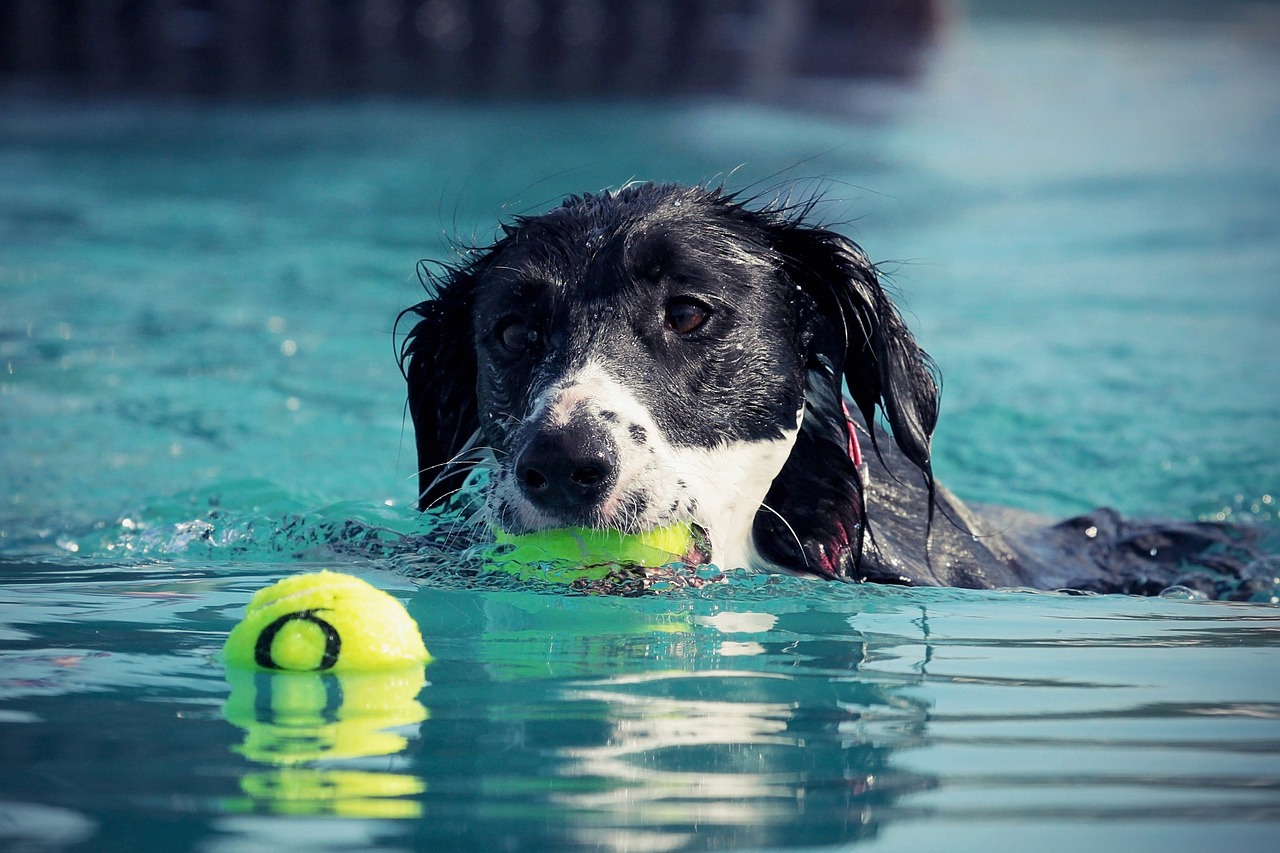
Finding the Right Clumber Spaniel
Choosing the perfect Clumber Spaniel for your home is an exciting journey, but it also requires careful consideration. These adorable, gentle giants are not just pets; they become cherished family members. So, how do you ensure you find the right one? First, it's essential to decide whether you want to adopt from a rescue organization or purchase from a reputable breeder. Each option has its perks and challenges, and understanding these can help you make an informed decision.
When considering a breeder, look for someone who prioritizes the health and temperament of their dogs. A responsible breeder will be transparent about their breeding practices, provide health clearances for the puppies, and allow you to meet the puppy's parents. Additionally, they should be willing to answer any questions you might have about the breed and its care. It's not just about finding a cute puppy; it's about ensuring that you are welcoming a healthy and well-socialized dog into your life.
On the other hand, adopting from a rescue can be incredibly rewarding. Many Clumber Spaniels in shelters are looking for loving homes, and by adopting, you give a dog a second chance at life. However, you may not know the dog's complete history, so it's crucial to ask about their temperament, health, and any behavioral issues. Many rescue organizations conduct assessments on their dogs, providing valuable insight into their personalities and needs.
Regardless of the route you choose, consider the following factors when selecting your Clumber Spaniel:
- Age: Puppies require more time and training, while adult dogs may already have established behaviors.
- Temperament: Each dog has a unique personality. Spend time with potential dogs to see if their energy level and demeanor match your lifestyle.
- Health Screenings: Ensure that any dog you consider has been screened for common health issues associated with the breed.
Ultimately, finding the right Clumber Spaniel is about matching personalities and lifestyles. Whether you opt for a playful puppy or a calm adult, the bond you build will be worth every effort. Remember, this dog will be your companion for many years, so take your time in making the right choice!
Here are some common questions potential Clumber Spaniel owners often ask:
- How much exercise do Clumber Spaniels need? They require regular walks and playtime to stay healthy and happy.
- Are Clumber Spaniels good with children? Yes, they are known for their gentle nature and make excellent family pets.
- What is the average lifespan of a Clumber Spaniel? They typically live between 10 to 12 years.
Frequently Asked Questions
- What is the temperament of Clumber Spaniels?
Clumber Spaniels are known for their gentle and friendly nature. They are sociable, affectionate, and intelligent, making them excellent companions for families and individuals alike. Their calm demeanor allows them to get along well with children and other pets, which is a huge plus for any household.
- How much exercise do Clumber Spaniels need?
These dogs require regular exercise to maintain their physical and mental well-being. A daily routine that includes walks, playtime, and mental stimulation is essential. Ideally, aim for at least an hour of activity each day to keep them happy and healthy.
- Are Clumber Spaniels easy to train?
Training Clumber Spaniels can be a rewarding experience, but it requires patience and consistency. They are eager to please, which means they respond well to positive reinforcement techniques. Starting training early and incorporating socialization will help them become well-mannered companions.
- What health issues should I be aware of with Clumber Spaniels?
Like all breeds, Clumber Spaniels are prone to certain health conditions. Common issues include hip dysplasia, obesity, and ear infections. Regular veterinary check-ups and a balanced diet can help manage these risks and ensure your dog stays healthy.
- How can I find a reputable Clumber Spaniel breeder?
When looking for a Clumber Spaniel, it's important to research and find a reputable breeder who prioritizes health and temperament. Ask for health clearances, visit the breeding facility, and meet the puppy's parents if possible. Alternatively, consider adopting from a rescue organization dedicated to the breed.
- What should I feed my Clumber Spaniel?
A balanced diet is crucial for Clumber Spaniels. Look for high-quality dog food that meets their nutritional needs, and consult your veterinarian for specific recommendations based on your dog's age, weight, and activity level. Be mindful of portion sizes to help prevent obesity.
- Do Clumber Spaniels get along with other pets?
Yes! Clumber Spaniels are typically friendly and social, which helps them get along well with other pets. Early socialization is key to ensuring they are comfortable around different animals, so introducing them to various pets and environments from a young age is beneficial.





